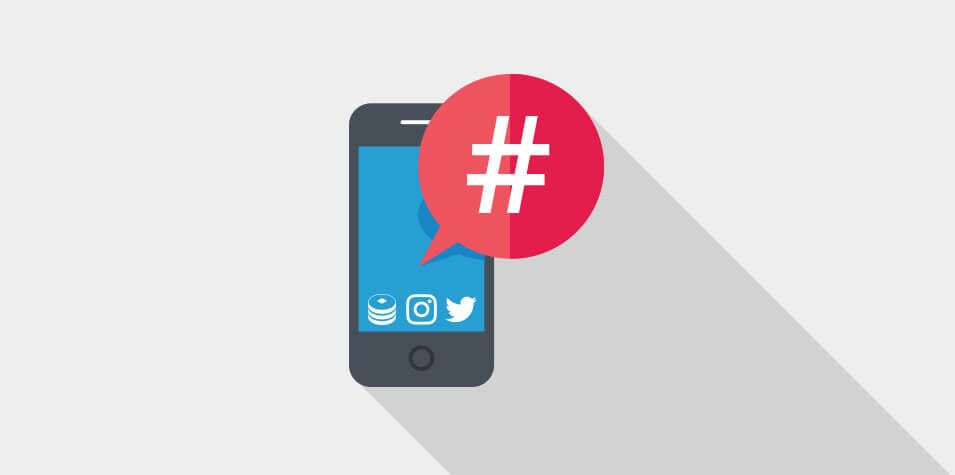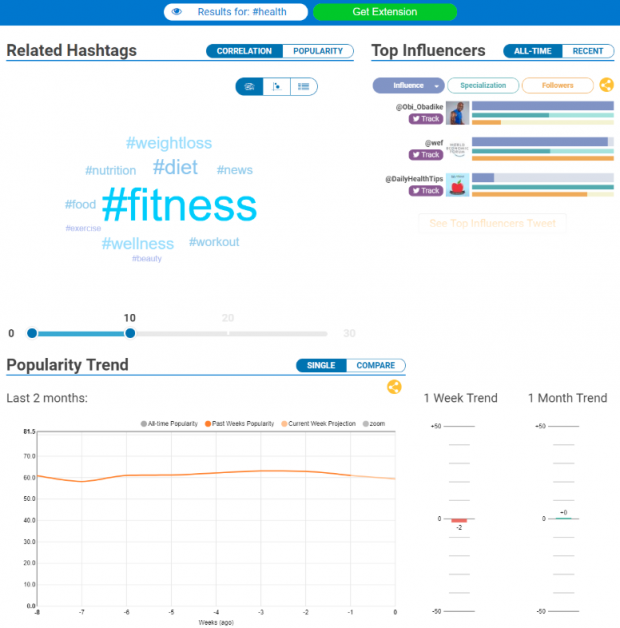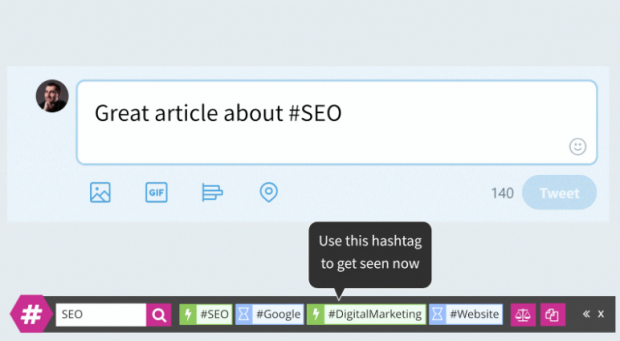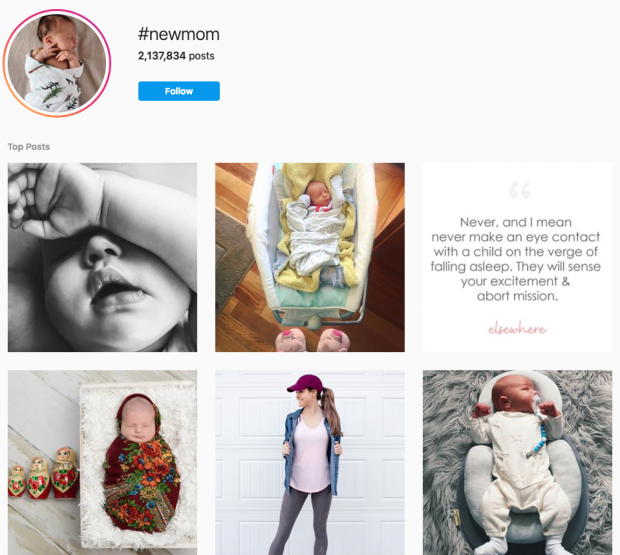Now that we all know what a hashtag is and why brands need to be using them, let’s break down how you could find the right hashtags.
Because while they are a strong method to enhance engagement, build your brand, and discover your audience, it isn’t going to matter when you are leveraging the incorrect hashtags for your social media posts.
To help you out, listed below are 5 great methods you could find the right hashtags to use for your brand.
1. Look at what influencers are doing
The influencers within your brand’s niche could provide you with lots of insights into what hashtags are working.
And it’s easy: Go through your influencer’s social media posts and take note of the right hashtags they are utilizing regularly.
To streamline the process even further, you could use a tool like Hashtagify.me. This tool permits you to search for different keywords throughout Twitter and Instagram and see the top influencers for that keyword.
For instance, when you enter in the term “health” it will search by all of Twitter and Instagram’s health hashtags to search out the top influencer using that keyword (FYI it’s Obi Obadike).
This could provide you with a terrific idea of what people in your niche are doing—and what you could do to optimize your hashtag usage.
BONUS: Make sure to check out the definitive guide to influencer marketing to get probably the most out of working with influencers.
2. See what’s trending
Zooming out from influencers, your brand’s entire niche could provide you with great insight into what right hashtags you need to be utilizing.
Whenever there is a trending topic or hashtag within your industry’s circle on social media, take note of that. You could jump on that hashtag in order to enhance your brand awareness too.
Another great tool you could use is RiteTag.com. This helpful platform provides you with instant hashtag suggestions based on real-time data whenever you make a social media post.
Whether it’s Twitter, Instagram, or Facebook, RiteTag will provide you with solid suggestions on what hashtags you can be used based on its usage.
The platform also comes with a browser extension that could give you real-time suggestions as you write your post.
3. Be specific
Keep in mind: The more you niche down your target market, the more clients you will attract.
The same idea goes for social media posts and hashtags. The more particular and focused your hashtags are, the more opportunities your target audience will have to see you.
Try and hone in on a passionate community that shares a curiosity in one particular theme. The more particular you could get with your hashtag, the more targeted your viewers will be—and a targeted audience generally means better engagement.
In case you do not have your own business hashtag, find one or two existing ones that really match the picture.
Say, for instance, your business sells baby merchandise. Instead of utilizing #parents—resulting in parents of children of all ages—opt for #newmom. The hashtag #newmom is particular to mothers of newborns—your target customer.
4. Use unbranded (but relevant) hashtags
Brand hashtags do not have to (read: shouldn’t) point out your model name. BUT they need to represent your brand and what you stand for.
Destination British Columbia created the hashtag #exploreBC. The tourism firm uses it to share scenic pictures of the Canadian province taken by their staff and the community.
Seeing images from regular people on the official Destination British Columbia account rapidly prompted more of their followers to embrace the hashtag and share their own images. As such, the company has created a rising movement that supplies them with fantastic, follower-generated content to use on their social accounts.
5. Cater your right hashtags to the site you are using
While hashtags on all social networks have the same fundamental goal of content tagging and discovery, the use of hashtags still varies by network.
However to recap: Hashtags are going to differ based on your social network and the kind of post you re making.
Hashtags on the photo- and video-sharing platform are sometimes more focused on the description of the content. That is at odds with Twitter, where hashtags tend to be more focused on a topic of conversation, or a group of people (a chat for instance) that you would like to engage.
Before utilizing hashtags, do research on the proper method to use them for that specific network. Most networks will have guides for hashtag choice and use (here’s Twitter’s, and again, our own for Instagram).
Also, take the time to find the most popular and most related hashtags on a particular topic for each network. This extra time you invest will pay off in engagement down the road.





